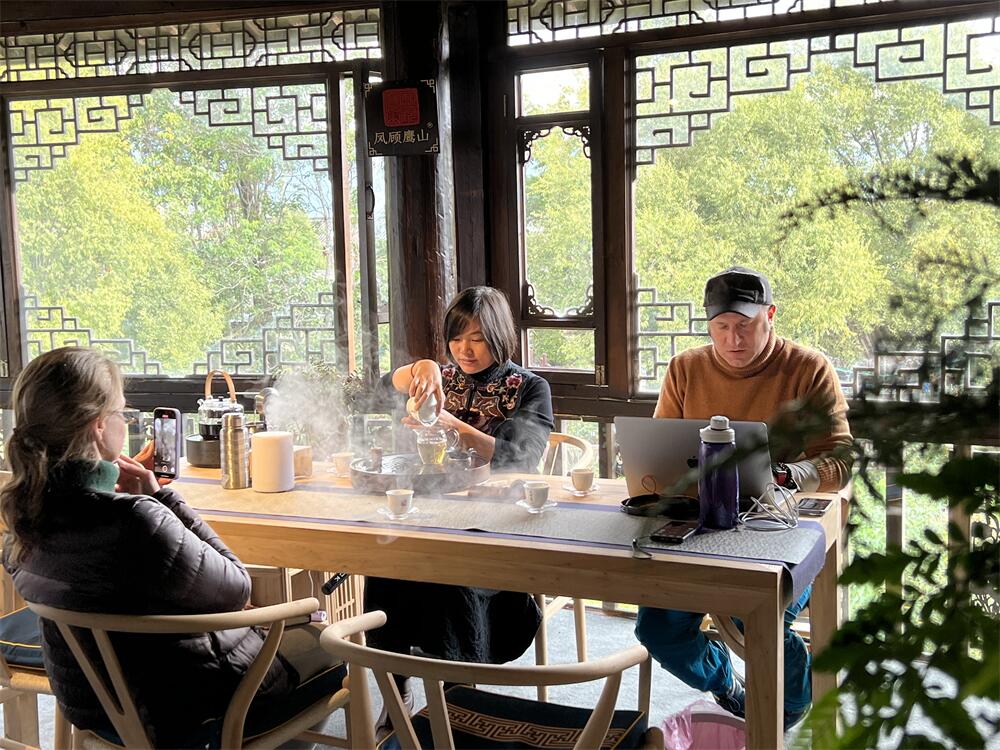 alt="Market Days in Menglian and Townships, Puer"
/>
alt="Market Days in Menglian and Townships, Puer"
/>
How to Drink Puer Tea
Pu’er tea (普洱茶) is a traditional Chinese tea from Yunnan Province, known for its earthy flavor and potential health benefits. To drink it, start by selecting raw (sheng) or ripe (shou) Pu’er, depending on your taste preference. Use a Gaiwan or Yixing teapot, rinse the leaves briefly with hot water, then steep the tea for 5-10 seconds. Enjoy multiple infusions, as Pu’er tea’s flavor evolves with each brew. Ideal for sipping slowly, Pu’er pairs well with snacks and offers a rich, unique tea experience.Drinking Pu’er tea (普洱茶) is a delightful and cultural experience, especially in Yunnan where it originates. Here’s a guide on how to enjoy Pu’er tea:
Brewing Pu’er Tea
Selecting Tea: Pu’er tea comes in two main types: raw (sheng) and ripe (shou). Raw Pu’er is aged naturally, while ripe Pu’er undergoes an accelerated fermentation process. Choose the type based on your preference for flavor and strength.
Preparing Tea Leaves:
- Quantity: Use about 5-7 grams of Pu’er tea leaves for a standard 150ml teapot or gaiwan.
- Rinsing: Rinse the tea leaves briefly with hot water to awaken their flavors and remove any impurities. Discard this rinse.
Brewing Process:
- Water Temperature: For raw Pu’er, use water just below boiling (around 90°C). For ripe Pu’er, water at boiling temperature (100°C) is suitable.
- Steeping Time: Brew raw Pu’er for short initial steeps (10-20 seconds), gradually increasing steeping time with subsequent infusions. Ripe Pu’er can be steeped longer (30-60 seconds for the first infusion).
- Infusions: Pu’er tea leaves can be steeped multiple times (up to 10 or more) as they unfold and release different flavors with each infusion.
Teaware: Traditional Yixing clay teapots or porcelain gaiwans are ideal for brewing Pu’er tea. They allow you to appreciate the tea’s aroma and flavor nuances.
Serving Pu’er Tea
Pouring: Pour the brewed tea into small cups or tasting cups. This practice allows you to appreciate the color, aroma, and clarity of the tea.
Enjoying: Sip the tea slowly to savor its complex flavors. Note the initial notes, body, and aftertaste that evolve with each steeping.
Pairing: Pu’er tea pairs well with dim sum, pastries, or light snacks. Its earthy and sometimes fruity flavors complement a variety of foods.
Storing Pu’er Tea
Storage Conditions: Pu’er tea improves with age when stored properly. Keep it away from strong odors, moisture, and direct sunlight. Traditional storage methods involve storing it in bamboo baskets or in a cool, dry place with controlled humidity.
Aging: Some tea connoisseurs age Pu’er tea for several years to develop deeper and richer flavors.
Cultural Notes
Gongfu Cha: Brewing Pu’er tea using the Gongfu Cha method emphasizes precise brewing times and multiple infusions to extract the full range of flavors from the leaves.
Social Aspect: Drinking Pu’er tea is often a social activity, where friends and family gather to enjoy tea and conversation, making it an integral part of Yunnan’s cultural heritage.
By following these steps, you can fully appreciate the richness and complexity of Pu’er tea, immersing yourself in its flavors and cultural significance.

 7 Days GolfingTour
7 Days GolfingTour
 8 Days Group Tour
8 Days Group Tour
 8 Days Yunnan Tour
8 Days Yunnan Tour
 7 Days Shangri La Hiking
7 Days Shangri La Hiking
 11 Days Yunnan Tour
11 Days Yunnan Tour
 6 Days Yuanyang Terraces
6 Days Yuanyang Terraces
 11 Days Yunnan Tour
11 Days Yunnan Tour
 8 Days South Yunnan
8 Days South Yunnan
 7 Days Tea Tour
7 Days Tea Tour
 8 Days Muslim Tour
8 Days Muslim Tour
 12 Days Self-Driving
12 Days Self-Driving
 4 Days Haba Climbing
4 Days Haba Climbing
 Tiger Leaping Gorge
Tiger Leaping Gorge
 Stone Forest
Stone Forest
 Yunnan-Tibet
Yunnan-Tibet
 Hani Rice Terraces
Hani Rice Terraces
 Kunming
Kunming
 Lijiang
Lijiang
 Shangri-la
Shangri-la
 Dali
Dali
 XishuangBanna
XishuangBanna
 Honghe
Honghe
 Kunming
Kunming
 Lijiang
Lijiang
 Shangri-la
Shangri-la
 Yuanyang Rice Terraces
Yuanyang Rice Terraces
 Nujiang
Nujiang
 XishuangBanna
XishuangBanna
 Spring City Golf
Spring City Golf
 Snow Mountain Golf
Snow Mountain Golf
 Stone Mountain Golf
Stone Mountain Golf












 What Our Customers Say?
What Our Customers Say?
